The 6 Most Haunted Places In Delaware
Introduction
We all enjoy a good ghost story, and Delaware has some pretty good ones. So, what are the most haunted places in Delaware? Read the article below for some of the likeliest subjects.
Cannonball House
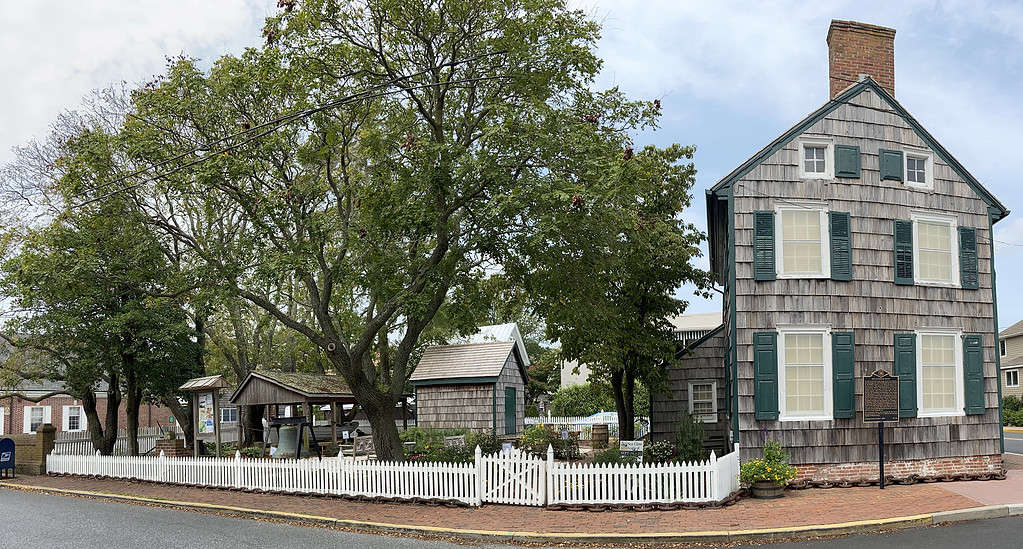
©Nolabob / CC BY-SA 4.0 – License
In 1765, boat pilots Gilbert McCracken and David Rowland built a house on Front Street that is now known as the Cannonball House. In 1813, during the War of 1812, a two-day bombardment in April damaged numerous buildings in Lewes. It was during this conflict that a cannonball embedded itself in the foundation of the house. Gilbert McCracken and his son Henry served in the Delaware militia, as did many other pilots. In the following years, generations of river and bay pilots lived in the house. In the 1960s, the newly formed Lewes Historical Society purchased it. It now serves as a maritime museum.
The tale is told that Susan, the wife of Captain David Rowland, one of the early owners of the house, brushed her skirt against the flaming hearth. She burst into flames and perished. In the years since the historical society purchased the property, keys have disappeared, tools have been hidden, and a troublesome door has refused to stay closed. These, along with other incidents, have been attributed to the ghost of Susan Rowland.
There is an admission fee to visit The Lewes Maritime Museum.
Contact Information
Address: 118 Front St, Lewes, DE 19958
Phone: 302-645-7670
Cape Henlopen State Park
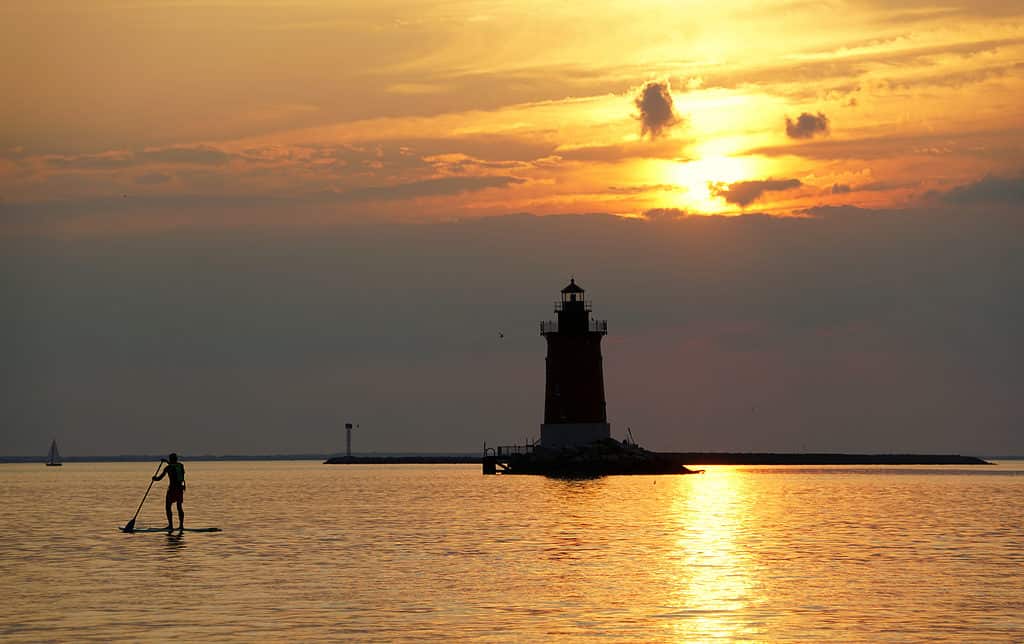
©Khairil Azhar Junos/Shutterstock.com
Cape Henlopen State Park sits at the mouth of Delaware Bay and is an apparent unlikely spot for a haunting. In the 1600s, after thousands of years of control by Native Americans, William Penn granted the land to colonial citizens to use its valuable resources. During WWII, the area’s importance to the defense of the Atlantic shore led to the creation of Fort Miles and the many fire towers along the coast.
The presence of these fire towers provides a setting for our tale. Legend has it that a phantom soldier still stands guard at Tower 12. In some photos taken near the tower, people claim to see the face of the long-dead soldier. Some people who approach the dune near the tower and campground trail say that they hear growling or a sepulchral voice.
The park is, of course, open to visitors, but it closes at sundown. There is a per-vehicle fee.
Contact Information
Address: 15099 Cape Henlopen Drive, Lewes, DE 19958
Phone: 302-645-8983
Dickinson Mansion
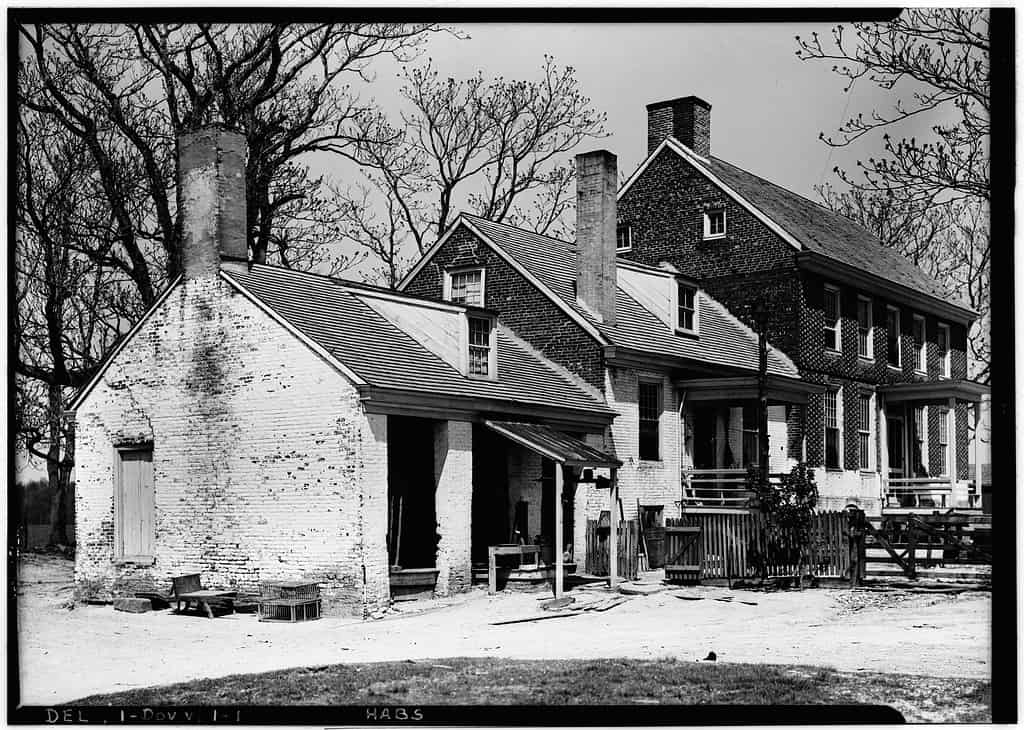
©Historical American Buildings Survey, W. Gould White / Public Domain – License
The Dickinson Mansion, known as the Poplar House to some, was the childhood plantation residence of John Dickinson, one of the signers of the U.S. Constitution. Samuel Dickinson, John’s father, built the house in 1739. A British attack in 1781 damaged part of the building. It nearly burnt down during a tragic fire in 1804. A combination of tenant farmers, indentured servants, and enslaved people worked the land.
The ghost of John Dickinson himself supposedly haunts the house. He can’t seem to quit the place. People sometimes claim to hear his pen scratching away on parchment in his old study. There have also been reports of levitating glowing orbs, strange cold spots, and mysterious sounds coming from the house.
Delaware owns the plantation, and admission is free to the public.
Contact Information
Address: 340 Kitts Hummock Rd, Dover, DE 19901
Phone: 302-739-3277
Fort Delaware
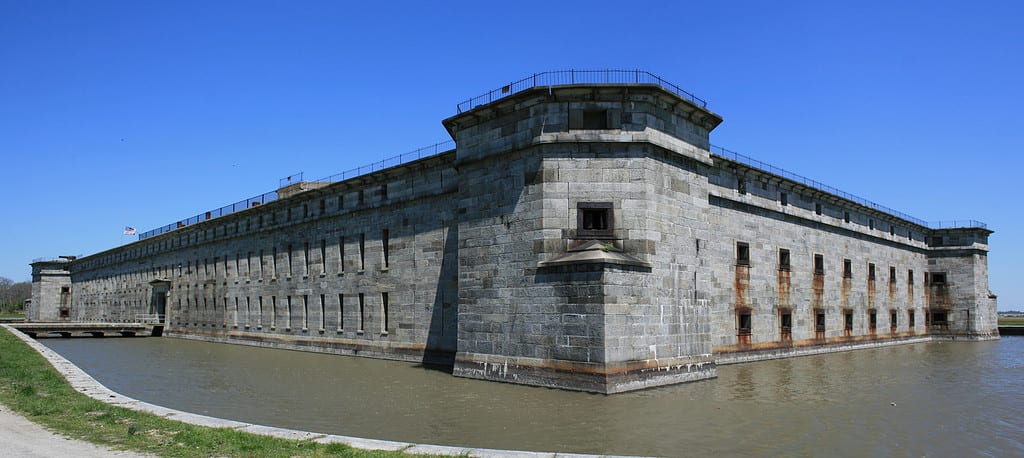
©Mpdoughboy153 / CC0 1.0 – License
Fort Delaware was built on Pea Patch Island in the Delaware River to protect Wilmington and Philadelphia from attack in the mid-1800s. It served as a prison during the Civil War. Confederate prisoners dreaded even the thought of being confined within its thick stone walls. At one point, the prison population exceeded 12,000 Confederate soldiers, and nearly 3,000 died, most due to smallpox and poor conditions. Prisoners were kept in dungeons and slept on the floor. Rats would have quickly spread disease in such conditions.
Due to its association with prison populations of the Civil War, there are numerous stories of ghosts and hauntings. The dungeons are reportedly the site of shadows and more defined apparitions. Voices and rattling chains are said to be heard throughout its halls. Some stories are also told of the ghosts of escapees who were lost to the waters of the Delaware, wandering along the shores at night in mildewy gray uniforms.
The fort is open for visitors year-round, with paranormal tours offered in the fall.
Contact Information
Address: 45 Clinton St., Delaware City
Phone: 302-834-7941
Rockwood Museum
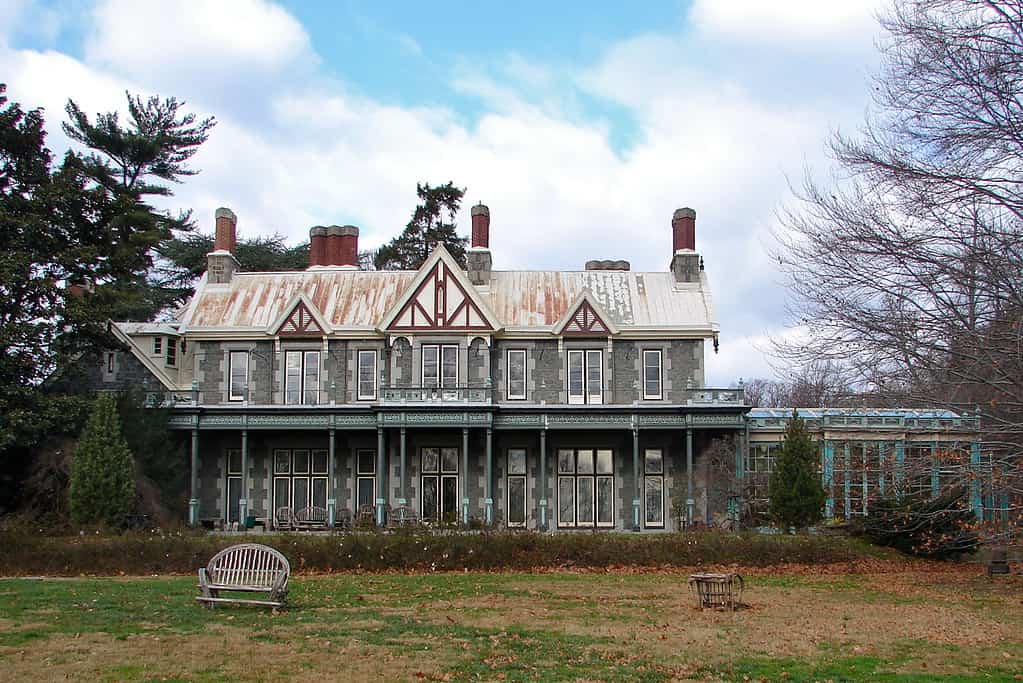
©Smallbones / Public domain – License
In 1851, Joseph Shipley of Wilmington built the Rockwood as his retirement estate. It was designed to reflect the English architecture and landscape design that he admired. In 1895, the Bringhurst branch of the family updated the property with a sense of early 20th-century style. New Castle County now owns the property.
The Gothic Revival design of the property gives the mansion the appearance of a haunted house. Perhaps this contributes to the numerous paranormal activities which have been reported there. Unexplained occurrences include the sound of feet on stairs and the appearance of a ghost dog. Specific ghosts rumored to inhabit the property include a man in a red smoking jacket, a spirit known as the “Shadowman,” which resides in the basement, and, not least of all, the ghost of Mary Bringhurst, the distant niece of Joseph Shipley. Her appearance is reported to include the scent of lilacs, which was said to be her favorite perfume.
The museum is open to visitors, of course, and haunted tours are offered at various times of the year.
Contact Information
Address: 4651 Washington Street Extension, Wilmington, DE 19802
Phone: 302-761-4340
Woodburn, The Governor’s Residence
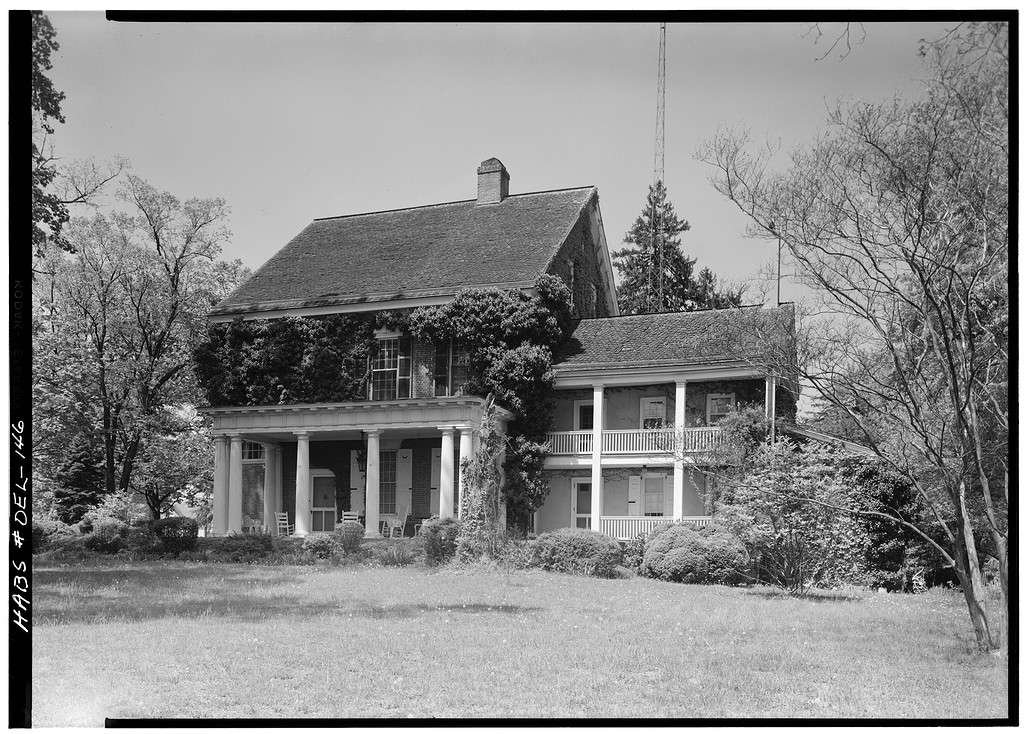
©Historic American Buildings Survey Cortlandt Van Dyke Hubbard, Photographer / Public Domain – License
The official Governor’s Residence of Delaware, Woodburn, has a long and storied history. The house was built by Charles Hillyard III in 1798. It stayed in the family for a short time after his death. Over the years, the house has been owned by gentleman farmers, landowners, doctors, dentists, abolitionists, and senators. Since its purchase by the state of Delaware for use as the Governor’s Residence, numerous governors have lived here.
The primary ghostly inhabitant of the residence is reputed to be the first owner—Mr. Charles Hillyard III. The first story of his presence dates back to 1815 when his daughter and son-in-law were hosting an itinerant preacher, a certain Mr. Dow, and they asked him to say grace. He suggested they wait for their other guest, to which the couple responded that they had no other guest. When prompted for a description, he spoke of a man in knee britches, a ruffled shirt, and a powdered wig. The hostess felt that he was describing her late father. Since then, it has been said that if you leave a glass of wine on the staircase and it is empty come morning, Mr. Hillyard has been active.
Tours of Woodburn are provided to the public, Monday through Friday, by appointment only. You cannot, however, stay the night—unless you or a family member are elected governor of Delaware.









